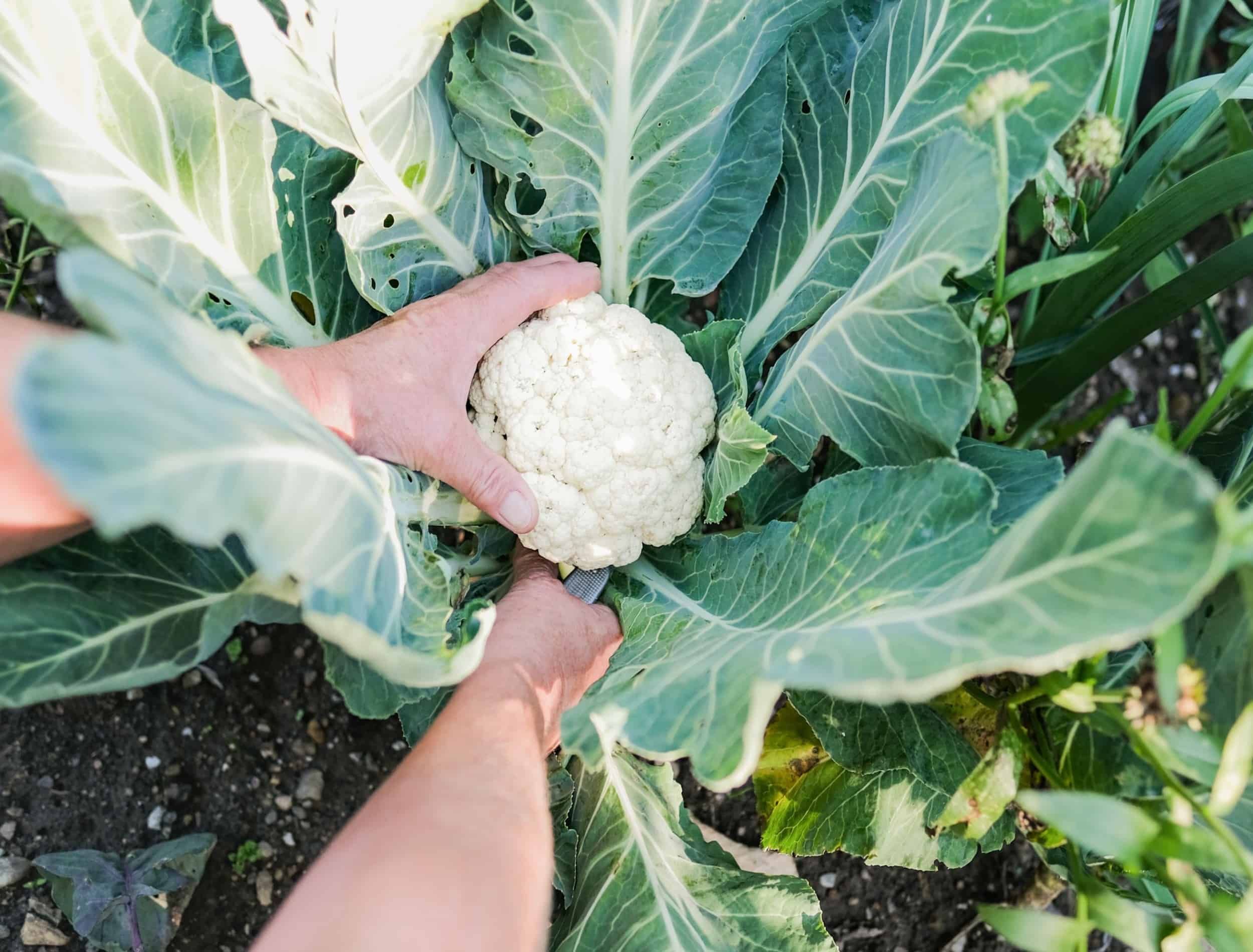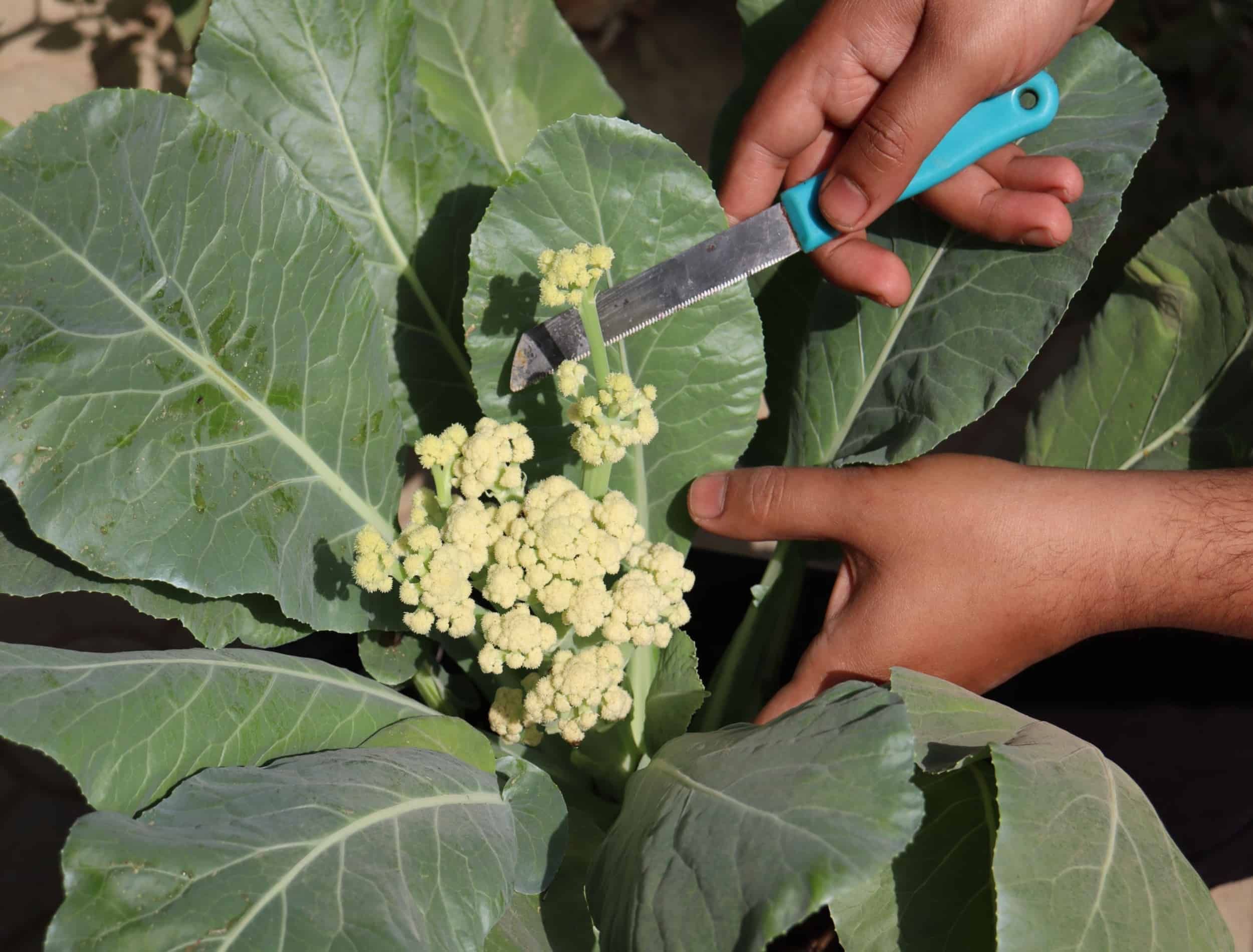Cauliflower is one of the most popular garden crops because of its versatility in the kitchen. While many people enjoy the white florets, the plant also comes in purple, orange, and green varieties. Like many veggies in the garden, cauliflower is rewarding to grow and delicious to eat. But you may not be sure where to start when it comes to harvesting.
Fortunately, this guide has compiled all the best tips and tricks to get you started. You'll discover when to harvest the plant, the tools you'll need to get the job done, as well as a step-by-step guide to ensure you're on your merry way.
When to Harvest Cauliflower
Image credit: Luiza Kamalova via Shutterstock
You should harvest cauliflower at different times of year depending on when you planted. Cauliflower is a cold-weather crop, so you should only plant it when the temperature remains under 85 degrees Fahrenheit. Harvest in the fall if you planted in the spring and harvest in the winter if you planted in the fall. They should be ready around three to five months after germination.
Timing is important with cauliflower since the plant will be bitter if you harvest too early or too late. When it's ready, the floret should be white (depending on the variety), firm, and compact. It should also be around 6 to 8inches in diameter. Avoid harvesting before the head is white.
Also, avoid harvesting after the florets have spread out and flowers have grown. The head is a collection of buds and it will lose its flavor once the buds begin to loosen. Harvest the plant immediately if you notice the florets beginning to spread.
Tools You'll Need
Image credit: Natallia Ramanouskaya via Shutterstock
Now that you know when to harvest cauliflower, it's time to determine how to get the job done. But first, there are a few tools you'll need to make the process as simple as possible. Check them out below.
- Gardening gloves
- Sharp knife
- Collection basket
- Damp paper towel
- Perforated plastic bag
- Watering can or hose
- Pruning shears
How to Harvest Cauliflower
Step 1: Cut the Cauliflower
Image credit: Bond JP via Shutterstock
Once the floret is ready for harvesting, chop the head at the base of the plant using a sharp knife. To protect the cauliflower, wrap a few leaves around the head before cutting. Also, cut at a 45 degree angle at around four inches below the head. The extra stalk will make preparing the cauliflower easier.
Step 2: Remove Remaining Leaves and Store Cauliflower
Image credit: Olya_Beli_Art via Shutterstock
The leaves of the cauliflower should protect the head and prolong its quality until it is ready to eat. Only remove any remaining leaves around the head when you're ready to use it. You can either dispose these in the compost or cook with them. You can also harvest and use some of the leaves around the central stalk to encourage new growth.
To store, wrap the head in damp paper towel and place in a perforated plastic bag. Store the vegetable in the crisper to help it stay fresh for longer – it should last about a week. Otherwise, you can wash it, cut it up, and freeze it for future use.
Step 3: Continue to Maintain and Harvest the Plant
Image credit: Harshit Srivastava S3 via Shutterstock
After you have harvested the main cauliflower head, the plant will continue to produce smaller cauliflower heads. You can harvest these using the same techniques, but the proper care is essential. Continue to water the plants every week and cut off the small cauliflower florets as they grow. Cut them off using a sharp knife, slicing one to three inches below the top of the florets.
Once the plant begins growing smaller florets, it will stop developing large shoots. Eventually, the plant will stop growing for the season. At this point, you should harvest the leaves using pruning shears, cutting at the base of the stem. You can also eat or dispose of these leaves.
Happy Harvesting!
Cauliflower is a crowd favorite for foodies and gardeners alike. And thankfully, it's incredibly simple to harvest once you have completed the growing process. Remember to carefully remove the floret, keeping the outer leaves in tact to protect the head in storage. After harvesting, remove any excess leaves from the plant to encourage growth and continue to care for the plant. Harvest new florets as they grow, and remove all leaves once the growing season is over.
Will you be growing and harvesting cauliflower in your vegetable garden this year? We hope these tips help make the process simple and seamless! Let us know how it goes down below!




